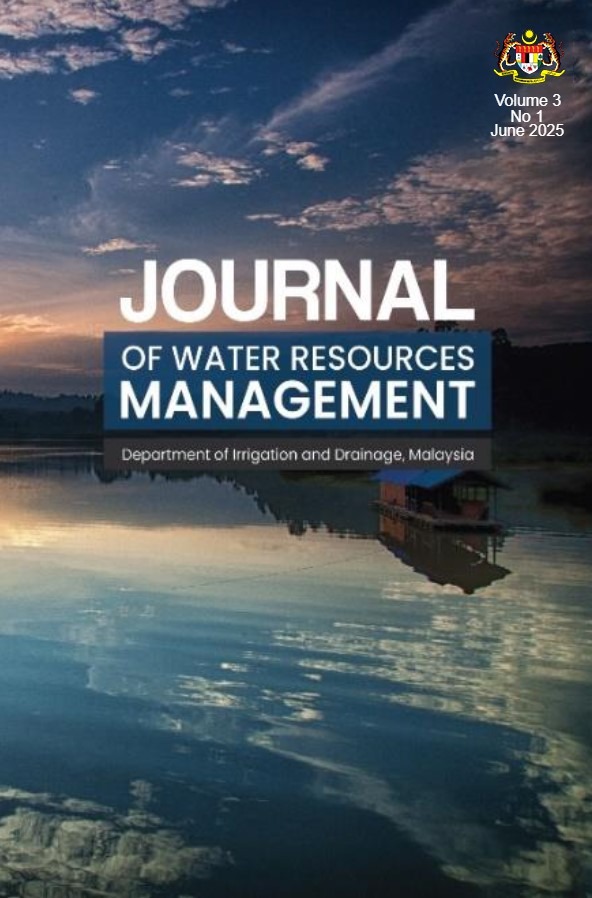Published 10-07-2025
Keywords
- flood risk assessment,
- HEC-LifeSim,
- HEC-RAS,
- agent-based modelling,
- evacuation planning
- Kota Belud,
- Sabah ...More
How to Cite
Copyright (c) 2025 Journal of Water Resources Management

This work is licensed under a Creative Commons Attribution-NonCommercial-ShareAlike 4.0 International License.
Abstract
This study simulates flood events with 10-, 50-, and 100-year return periods in Kota Belud, Sabah, to assess potential life loss and direct damage, with the goal of strengthening the local evacuation plan. As one of Sabah’s most flood-prone regions, Kota Belud has experienced significant socio-economic impacts from past floods. Utilizing HEC-RAS and HEC-LifeSim, the analysis integrates hydraulic modeling with population and structural data sourced from tools such as Google Earth Pro, QGIS, and OpenStreetMap. Building characteristics, including geospatial coordinates, storeys, function, and construction details, were systematically compiled to support simulation inputs. Two preparedness scenarios were modeled over 2000 iterations: minimal awareness and early alert with high awareness. Results show higher population mobilization rates with improved preparedness (83.52%, 80.67%, 77.38%) compared to minimal preparation (72.67%, 70.17%, 67.20%), across increasing return periods. However, structural damage remained relatively consistent across both scenarios, with values of RM126,022.30, RM166,016.52, and RM204,856.40, respectively. The findings suggest current flood response measures are insufficient to prevent life loss, highlighting the need for revised land-use planning and improved resource allocation to emergency services.

